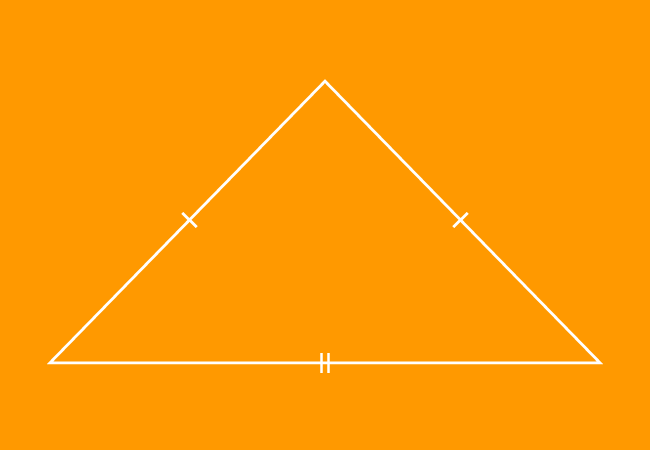

The isosceles triangle is categorized as follows based on the angles between the two legs of a triangle: Mention the several isosceles triangle categories. In addition, the angles on the opposite sides of the two equal sides are congruent. A triangle with two equal sides is called an isosceles triangle. The vertex angle is bisected when an altitude is drawn to the base of the isosceles triangle.The perimeter of an isosceles is given by the formula, P = 2a + b.The area of an isosceles triangle is given by A = ½ × b × h Square units.Two of the isosceles triangle's three angles are equal in measure, which is the polar opposite of the equal sides.The obtuse triangle is defined as a triangle with one of its angles larger than 90 degrees.The hypotenuse is the third unequal side of the triangle. A right isosceles triangle has two equal sides, one of which serves as the perpendicular and the other as the triangle's base.If the two angles opposing the legs are equal and smaller than 90 degrees, the isosceles triangle is called an acute isosceles triangle.They are isosceles acute triangle, Isosceles right triangle, Isosceles obtuse triangle. There are 3 types of an isosceles triangle.In addition, the two angles on the opposite sides of the two equal sides are also equal. A triangle with two equal sides is known as an isosceles triangle.As a result, the height bisects the base.Īltitude of the isosceles triangle Things to Remember A triangle's congruent legs also form the congruent hypotenuse. The triangle's altitude creates the necessary right angle, and the altitude becomes the shared legs. The two congruent triangles are formed as it bisects the base. The vertex angle is bisected when an altitude is drawn to the base of the isosceles triangle. The perimeter of an isosceles is given by the formula,Ī → Length of the two equal legs of an isosceles triangleī → Base of the triangle. If we know the base and side of an isosceles triangle, we can calculate its perimeter. Similarly, the perimeter of an isosceles triangle is equal to the total of the triangle's three sides. The perimeter of any form, as we all know, is the shape's boundaries. H → Height Perimeter of the Isosceles triangle The area of an isosceles triangle is given by, The area of an isosceles triangle may be calculated using the following formula: In general, the base and height of an isosceles triangle are half the product of the base and height. The region inhabited by an isosceles triangle in two-dimensional space is defined as its area. Let's take a closer look at the isosceles triangle's area and perimeter. The area and perimeter are used to calculate the isosceles triangle. We know that an isosceles triangle is a three-sided two-dimensional shape. The third angle of a right isosceles triangle is 90 degrees.Īs per the theorem, in an isosceles triangle, if two sides are congruent then the angles opposite to the two sides are also congruent.Īlternatively, if two angles are congruent in an isosceles triangle, then the sides opposite to them are also congruent.


The perpendicular bisector of the base of every isosceles triangle has a symmetry axis. Legs, base, and height are the three dimensions of a triangle, as we all know. Types of Isosceles Triangle Isosceles acute triangle In general, the isosceles triangle may be divided into three types:


 0 kommentar(er)
0 kommentar(er)
